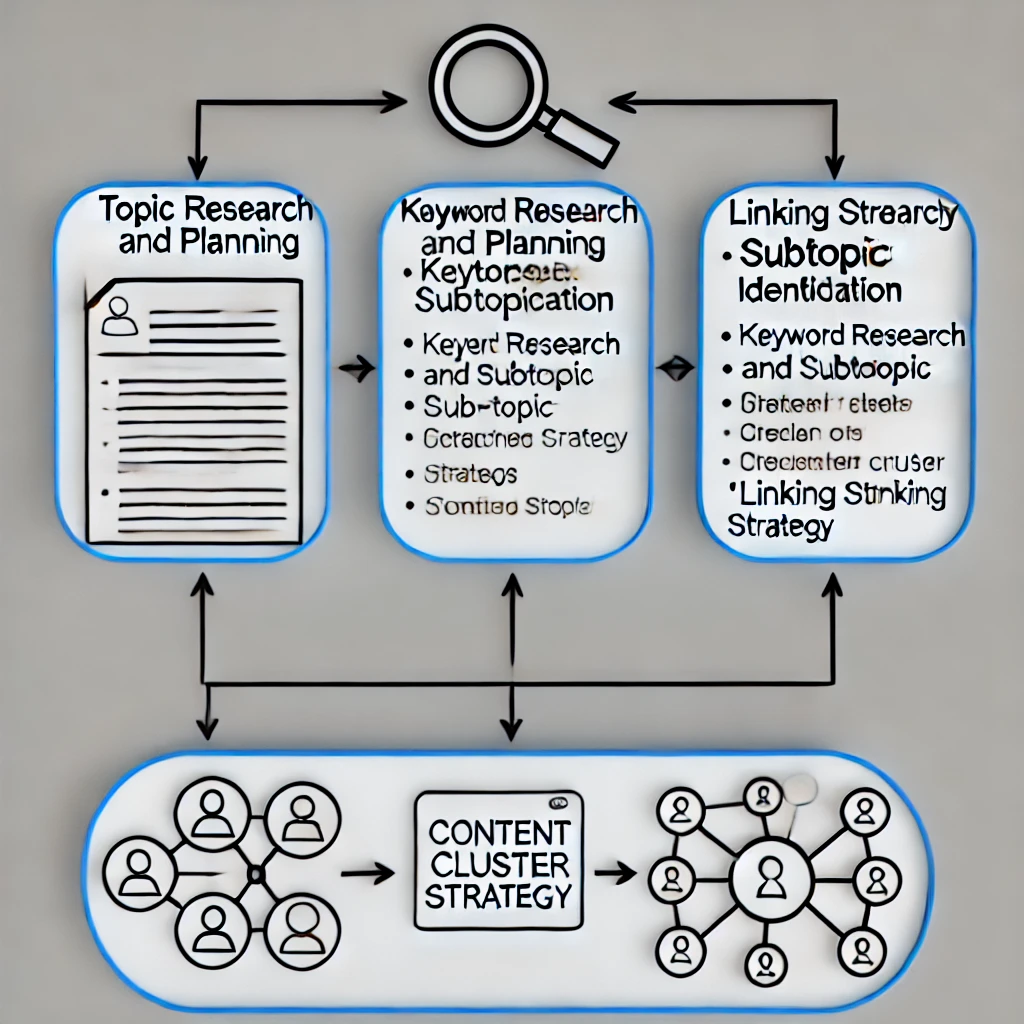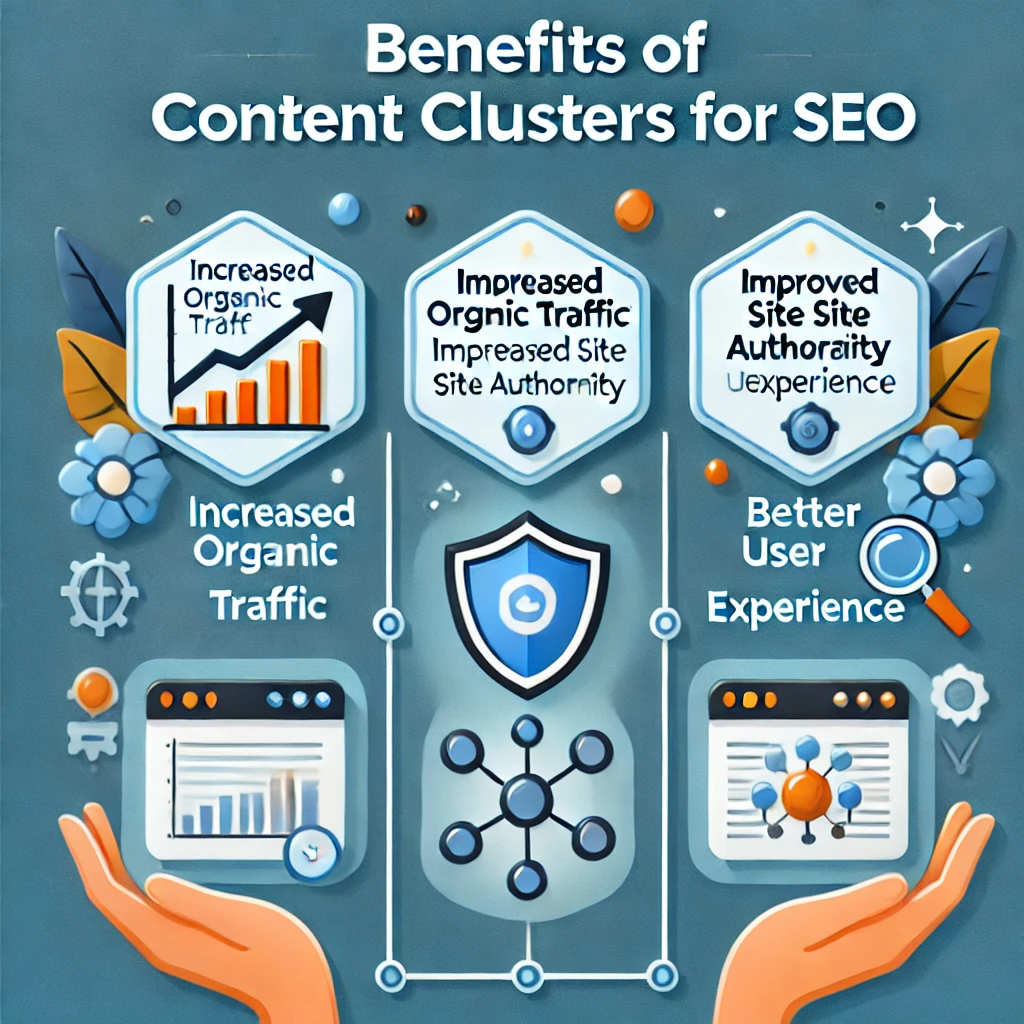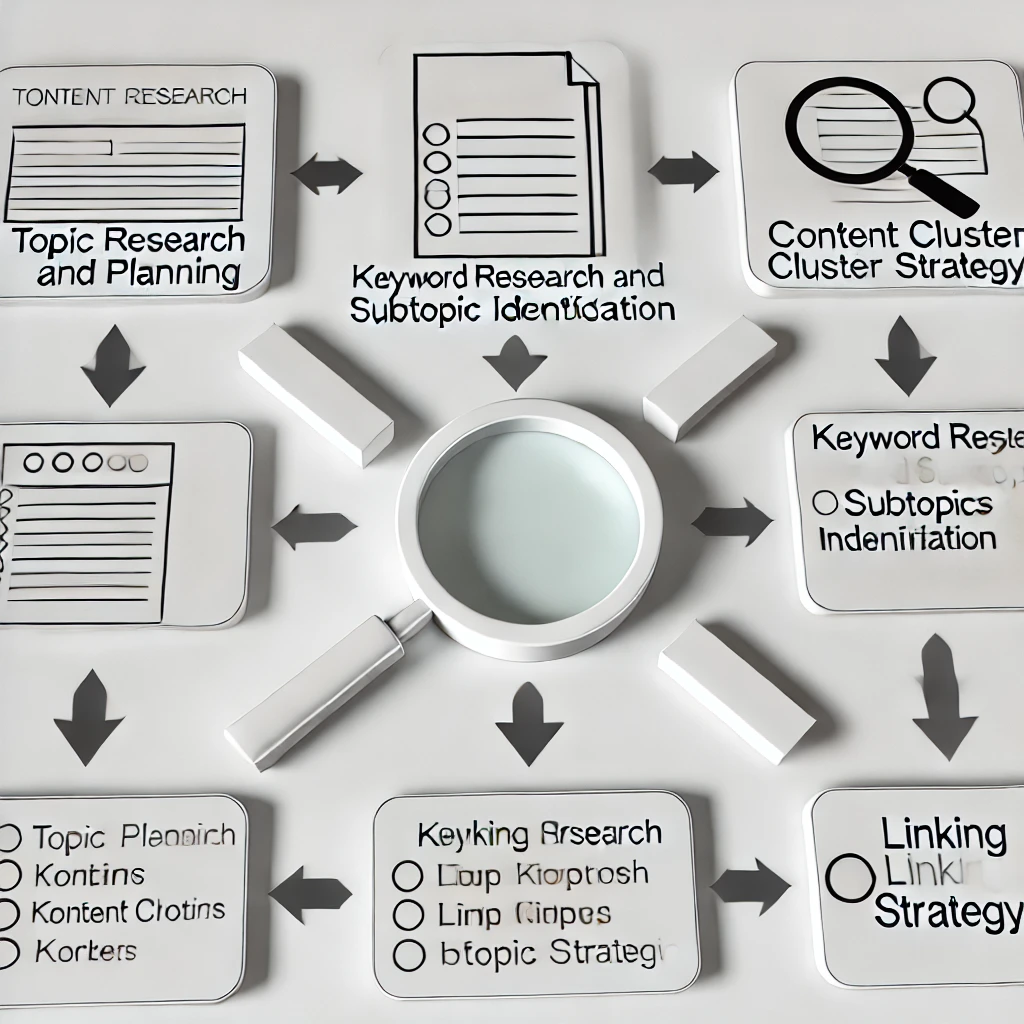When I think about effective SEO strategies, content clusters immediately come to mind. But what exactly is a content cluster? In simple terms, a content cluster is a group of interlinked web pages centered around one central topic, usually tied to a pillar page. The pillar page provides a comprehensive overview of the topic, while the cluster pages dive deeper into subtopics, creating a network of relevant, interconnected content.
Content clusters serve as a structured way to organize and present information, making it easier for both users and search engines to navigate your site. This architecture not only improves user experience but also boosts your site’s authority on the subject matter. To see examples of effective content clusters, check out our page on content cluster examples.
Importance of Content Clusters for SEO
You might be wondering, why do content clusters matter for SEO? The answer lies in how search engines like Google prioritize and index content. By organizing your content into clusters, you signal to search engines that your website has a breadth of valuable information on a topic. This arrangement not only enhances your site’s relevance but also increases its chances of ranking higher in search results.
Let’s look at some of the specific benefits content clusters can bring to your SEO strategy:
| Benefit | Explanation |
|---|---|
| Increased Organic Traffic | By covering a topic comprehensively, your site can rank for a variety of related keywords, driving more organic traffic. |
| Improved Site Authority | Interlinking cluster pages with the pillar page boosts the overall authority of your site on the subject. |
| Better User Experience | Users can find in-depth information easily, leading to higher engagement and lower bounce rates. |
If you’re looking to implement a content cluster strategy, start with thorough topic research. For guidance on this, visit our article on content cluster strategy.
Understanding the importance of content clusters will help you see why this approach is vital for modern SEO. To keep your strategy effective, always monitor performance and be ready to iterate based on your findings. More on this can be found in our section on content cluster seo.
What is a Content Cluster: Creating an Effective Strategy
To elevate your website and boost your SEO, crafting an effective content cluster strategy is crucial. Let’s dive into the essential steps: topic research and planning, followed by the linking strategy within content clusters.
Topic Research and Planning

When initiating a content cluster strategy, the first step is thorough topic research and meticulous planning. At its core, a content cluster revolves around a central topic, also known as a “pillar.” This pillar should be broad enough to allow for various subtopics, yet specific enough to remain focused.
- Identify the Pillar Topic: Begin by selecting a pillar topic that aligns with your audience’s interests and your niche. This could be a comprehensive guide or an in-depth exploration of a broad subject.
- Keyword Research: Use SEO tools to find relevant keywords and search queries related to your pillar topic. Look for high-volume and less competitive keywords to target.
- Subtopic Identification: Break down the pillar topic into smaller, more specific subtopics. Each subtopic should merit its own detailed content piece and collectively cover the pillar topic extensively.
Consider the following table for a structured breakdown:
| Pillar Topic | Subtopic 1 | Subtopic 2 | Subtopic 3 |
|---|---|---|---|
| Content Marketing | What is Content Marketing? | Benefits of Content Marketing | Content Marketing Strategies |
For more insights on organizing your clusters, visit our article on content cluster organization.
Linking Strategy within Content Clusters
A thoughtful linking strategy is vital for connecting all the pieces. Internal links not only enhance user navigation but also signal to search engines the importance and relevance of your content.
- Link from Subtopics to Pillar: Each subtopic article should link back to the pillar page. This reinforces the pillar page’s authority and provides readers with comprehensive information.
- Interlink Subtopics: Creating links between subtopics ensures a seamless flow of information and keeps readers engaged. This interconnected network strengthens the overall SEO of your cluster.
- Strategic Placement: Place your links contextually within the body of the content. This offers users additional value and maintains the natural readability of the articles.
By implementing these strategies, you solidify the structure and efficacy of your content clusters. For more examples on effective linking, check out our article on content cluster examples.
In the journey of refining your content cluster SEO, remember that research, planning, and strategic linking are pivotal. Through well-planned clusters, you can elevate your content and achieve notable gains in visibility and traffic.
What is a Content Cluster? Benefits of Clusters
Leveraging content clusters can provide significant advantages for any online marketer, blogger, or influencer. Understanding these benefits can help you harness the full power of what is a content cluster.

Increased Organic Traffic
One of the most notable benefits of content clusters is the potential for increased organic traffic. When I create organized, interlinked content around a central topic, search engines better understand the context and relevance of my site. This clarity helps improve rankings for multiple related keywords, pulling in more visitors through organic searches.
For example:
| Content Type | Monthly Visitors Before Clusters | Monthly Visitors After Clusters |
|---|---|---|
| Blog Posts | 2,000 | 5,000 |
| Product Pages | 1,500 | 3,500 |
| Resource Pages | 1,000 | 2,800 |
These numbers reflect how strategically utilizing content clusters can effectively expand my audience.
Improved Site Authority and Relevance
Another compelling advantage is the boost in site authority and relevance. By creating a web of related content, I signal to search engines that my site is an authoritative source on the specific topic. This helps enhance the overall credibility and trustworthiness of my website.
Internal linking strengthens the depth of my website, making it easier for search engines to index and evaluate the content. This content cluster organization improves user engagement and reduces bounce rates, contributing positively to SEO.
Consider a scenario where I address multiple facets of a main topic:
| Topic | Number of Interlinked Pages | Increase in Domain Authority |
|---|---|---|
| Digital Marketing | 15 | +10% |
| E-commerce Solutions | 20 | +12% |
| Content Creation Tips | 10 | +8% |
By implementing a strong content cluster strategy, I can ensure my site remains relevant and authoritative in the eyes of search engines.
By focusing on what is a content cluster and optimizing for these benefits, I can create a more effective digital presence, driving better traffic and authority for my site. For more details on creating and optimizing content clusters, check out our articles on content cluster seo and content cluster examples.

What is a Content Cluster? Implementing Content Clusters
Implementing content clusters involves two main aspects: content creation and optimization, as well as monitoring performance and iterating.
Content Creation and Optimization
When creating content clusters, I focus on developing a central “pillar” page that covers a broad topic comprehensively. This pillar page serves as the hub, linking to cluster content that delves into subtopics in greater detail. This all then links back to the pillar page, creating a network of interlinked pages.
For effective optimization, I ensure that keywords are strategically incorporated into each piece of content without overstuffing. Meta tags, headers, and alt text for images all play a role in optimizing each page. I also focus on crafting engaging, high-quality content that offers value to readers.
| Action | Description |
|---|---|
| Pillar Page Creation | Comprehensive coverage of a broad topic. |
| Cluster Content Creation | Detailed articles on subtopics. |
| Keyword Integration | Strategic placement of keywords. |
| Meta Tag Optimization | Ensuring meta titles and descriptions are compelling and accurate. |
For more on assembling a robust strategy, you can refer to content cluster strategy.
Monitoring Performance and Iterating
Once the content is live, continuous monitoring helps gauge its effectiveness. I use analytics tools to track metrics like organic traffic, bounce rate, and time on page. These metrics provide insights into how well the content is performing and highlight areas that may need improvement.
If I notice that certain pages aren’t performing as expected, I update them with new information or optimize them further. This iterative process of content refinement ensures that each part of the cluster remains relevant and valuable.
| Metric | Purpose |
|---|---|
| Organic Traffic | Measures the number of visitors from search engines. |
| Bounce Rate | Indicates the percentage of visitors who leave after viewing only one page. |
| Time on Page | Shows how long visitors stay on a page. |
For additional strategies on improving content cluster performance, exploring content cluster seo can be beneficial.
By focusing on both content creation and ongoing optimization, I can develop content clusters that significantly enhance my site’s SEO performance. For more examples and organizational tips, see content cluster examples and content cluster organization.

